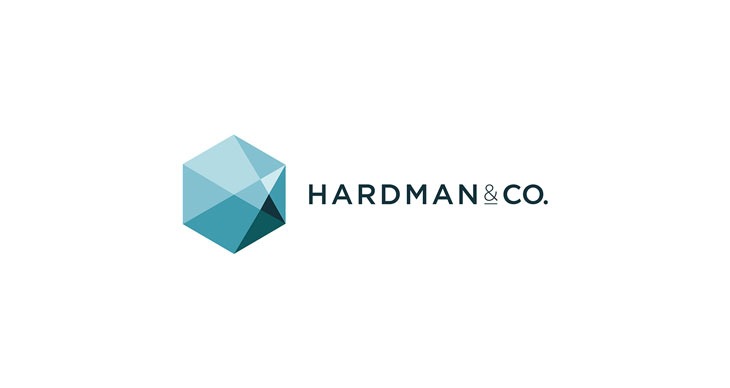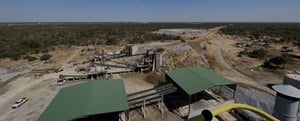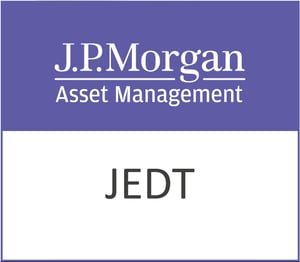Arbuthnot Banking Group plc (LON:ARBB) has announced its audited results for the year ended 31 December 2024.
Arbuthnot Banking Group PLC is the holding company for Arbuthnot Latham & Co., Limited.
FINANCIAL HIGHLIGHTS
· Profit Before Tax of £35.1m (2023: £47.1m)
· Operating income of £179.5m (2023: £178.9m)
· Average net margin of 5.1% (2023: 5.7%)
· Earnings per share of 152.3p (2023: 222.8p)
· Final dividend declared increased by 2p to 29p (2023: 27p)
· Special dividend of 20p per share paid in June 2024
· Total dividend per share for the year of 69p (2023: 46p), an increase of 50%
· Net assets of £267.0m (2023: £252.4m)
· Strong capital ratios maintained with a CET1 ratio of 13.2% (2023: 13.0%) and a total capital ratio of 15.3% (2023: 15.2%)
· Year-end net assets per share of 1636p (2023: 1547p)
· Substantial surplus liquidity at the year-end of £896m above the regulatory minimum (2023: £962m)
OPERATIONAL HIGHLIGHTS
· Continued growth in customer deposits to £4.13bn (2023: £3.76bn), up 10% year-on-year, driven by the success of the Group’s relationship-based approach across both Private & Commercial Banking
· Customer loans increased 2% to £2.38bn (2023: £2.33bn)*, as the Group maintained tighter credit appetite during the year
· Positive contribution to performance from the specialist lending divisions, each of which saw growth in operating income
· Funds under management and administration (“FUMA”) increased 30% to £2.21bn (2023: £1.71bn), driven by very strong inflows which represented 28% of FUMA at the start of the year
· Occupied new office located at 20 Finsbury Circus, which was officially opened by HRH The Princess Royal
Commenting on the results, Sir Henry Angest, Chairman and Chief Executive of Arbuthnot, said: “As the interest rate environment normalised and deposit costs caught up with loan pricing, Arbuthnot delivered a creditable performance and made progress against the Group’s “Future State 2″ strategic plan. We are confident that the continued delivery of our strategic plan will enable Arbuthnot to take advantage of all opportunities to develop the business over the medium term.”
Note: * This balance includes both Customer loans and assets available for lease.
Chairman’s statement
Arbuthnot Banking Group (“ABG” or “The Group”) is pleased to report a profit before tax of £35.1m. Although this is lower than the £47.1m recorded in 2023, I believe this to be a very creditable performance by the business as we have long been signalling that 2023 benefited from rising rates and that as interest rates begin to fall, the lag effect of the pricing of deposits would catch up and our costs of funds would increase. This has been the case in 2024 as the average cost of funds increased from 2.43% to 3.15% contributing to an increase in our interest expense of £42.4m year on year.
On a strategic and operational level, I am pleased with the progress being made across the Group. Our loan book, including assets available for lease, increased to £2.4bn with continued good contributions from our specialist lending subsidiaries. Once again, the attractiveness of the proposition and personal service of our banking products continued to resonate with our clients as the deposit balances grew by 10% to close in excess of £4bn. This is a major milestone that the bank surpassed for the first time in its history.
The most notable achievement, however, is the success of our Wealth Management division. The funds under management and administration increased by 30% to surpass £2bn for the first time and closed the year at £2.2bn. This is on top of the 29% growth in the prior year meaning the division has increased its client balances by 67% over the past two years. This is particularly pleasing in a marketplace where competitors are finding it increasingly difficult to grow their balances organically and to counter this have found growth possible only through acquisitions.
The success of this growth has now led us to focus on improving the profitability of the division and we have started a project in 2025 to optimise the business processes and product offerings. This should begin to show returns in 2026.
Opening of new offices by HRH The Princess Royal
As I mentioned in my report last year, we were busy preparing to move into our new head office located at 20 Finsbury Circus. I am pleased to say that the move was completed successfully during the late summer and the response we have received from both our clients and employees has exceeded our expectations.
This has brought increased levels of energy and collaboration to the Group which has made it far easier to move the business forward. More recently I was delighted to welcome HRH The Princess Royal to officially open the new premises. She toured the new offices and met with the Board of Directors and a number of our managers and staff. The Bank has a long and notable 192 year history but this will certainly be remembered as a major highlight.
Business Environment
During the early months of 2024 it became increasingly apparent that we would face a change in Government as and when a general election was called. Prior to this, the now Labour administration indicated that economic growth would be its main goal, something that I have been championing for several years. However, the type of growth is just as important as simply any growth.
The economy needs to be less bureaucratic, less regulated and more business friendly. Growth must come from private enterprises and not just the public sector and investment in large infrastructure projects.
Therefore, I find it almost inconceivable that the new Government’s first initiatives could be any less business friendly. Businesses face higher levels of minimum wages, increased employer national insurance contributions and greater employee rights in the new Employment Bill, all of which place additional burdens on private enterprises and will inevitably reduce growth and investment and increase unemployment. It is inevitable, and already proving to be, that small and medium sized businesses will be the most disadvantaged by these burdens. We hope that further engagement with businesses and the economic imperative to deliver growth will cause the Government to pursue a more pro-growth policy agenda over the course of this parliament, and events across the Atlantic may work to catalyse this.
Capital Regime
An example of how the policy environment in the United States can have a direct and immediate impact on the United Kingdom is the regulatory capital framework. The intention to cease implementation of the new Basel 3.1 capital rules in the United States has led the PRA to announce that it is delaying the introduction of these rules in the United Kingdom until 2027 so that it can see how the situation in the United States develops.
Given the incremental capital requirements, on top of those that are already higher than any other developed country, Basel 3.1 could be another major impediment to growth as banks deleverage to cope with the new rules.
I therefore hope with optimism that the rules will ultimately be abandoned. In the meantime, we will continue to manage our business with an eye to the new requirements and will adjust lending appetites accordingly until the direction of travel becomes clearer.
Board Changes and Personnel
During the year I was pleased to welcome Richard Gabbertas to the Group Board. I would like to give my thanks to the contribution that Paul Marrow has given to Arbuthnot Latham over the past 10 years as he retired from its Board in May 2024. He has held several roles including Chair of the Risk Committee and has always given good advice to the business gained from his long career in the banking industry.
As ever, the continued success of the Group reflects the hard work and commitment of our members of staff. On behalf of the Board, I extend our thanks to all of them for their contribution in 2024. Finally, I would like to thank my fellow Directors on both the Board of Arbuthnot Banking Group PLC and Arbuthnot Latham & Co., Ltd for their help and advice during the year.
Dividend
During 2024 the Board announced the payment of a special dividend of 20p per Ordinary share and Ordinary Non-Voting share which was paid along with the interim dividend of 20p (2023: 19p) per Ordinary share and Ordinary Non-Voting share.
Additionally, the Board is recommending a final dividend in respect of 2024 of 29p per Ordinary share and Ordinary Non-Voting share. This is an increase of 2p compared to the final dividend of 2023. The final dividend, if approved at the 2025 AGM, will be paid on 30 May 2025 to shareholders on the register at the close of business on 22 April 2025. This, together with the interim and special dividend gives a total dividend of 69p per Ordinary share and Ordinary Non-Voting share, which compares to the total dividend of 46p per share paid in respect of 2023.
Outlook
The outlook for the economy appears to be more pessimistic. The UK was considered to be one of the fastest growing markets in the middle of 2024. Now that the fiscal plans of the new Government have become clear, the economy has ground to a halt, with growth forecasts being cut, and the real possibility of recession coming about in the near term. In addition there is further uncertainty in relation to Basel 3.1 and future regulatory capital requirements.
However, our business has never been constrained by a lack of good opportunities and client growth remains strong. I believe this will remain the case going forward. Therefore, we will continue to follow our principles and philosophy and keep our focus on enhancing our stable and sustainable business.
Strategic Report – Business Review
| Group Key Metrics | 2024 | 2023 | |
| Operating income | £179.5m | £178.9m | |
| Other income | £1.7m | £2.5m | |
| Operating expenses | £139.8m | £131.1m | |
| Profit before tax | £35.1m | £47.1m | |
| Customer loans1 | £2.4bn | £2.3bn | |
| Customer deposits | £4.1bn | £3.8bn | |
| Total assets | £4.7bn | £4.3bn | |
| Key Performance Indicators | |||
| Funds under management and administration | £2.2bn | £1.7bn | |
| Average net margin 2 | 5.1% | 5.7% | |
| Loan to deposit ratio 3 | 57.2% | 62.0% | |
| 1 This balance includes both customer loans and assets available for lease. | |||
| 2 Average net margin: Gross interest income yield less average interest rate on customer deposits | |||
| 3 Loan to deposit ratio: Customer loans (including both customer loans and assets available for lease) divided by customer deposits | |||
The Group continued to make progress with both its deposits and loans throughout 2024. While the Group maintained its plan to diversify the lending portfolios as indicated in the Future State 2 strategy, published with the 2022 Annual Results, it is also pleasing to report the strong performance of the Wealth Management division, which saw Funds under Management and Administration exceed £2bn for the first time in its history, closing the year at £2.2bn.
The Bank finished the year with total deposits of £4.1bn compared to £3.8bn for the prior year. The Bank continued its strategy of funding the specialist lending divisions with cheaper yet sticky balances from relationship driven deposit account clients. Whilst the Bank experienced increased deposit rates, it did not compete for deposits on the non-relationship aggregator platforms.
Lending balances (including lease assets) finished the year at £2.4bn, compared to £2.3bn for the previous year end. However, as mentioned in the previous year’s Report and Accounts, the Bank continued to operate with a tightened credit appetite and reduced LTVs for new lending below the Bank’s previous guidance of 60%. Despite the growth in lending the broader economic uncertainty and lower business confidence resulted in reduced new business pipelines towards the end of the year.
The Group reported a profit before tax of £35.1m compared to £47.1m for the prior year. As noted in the prior year Report and Accounts, this decline was expected due to the lag effect of time deposits repricing to higher interest rates in the current year, whereas lending interest income had repriced immediately after the successive interest rate rises in the prior year. In 2024, after twelve months of a static interest rate, the Bank of England made its first 25 basis point interest rate cut on 1 August with a further 25 basis point cut on 7 November. Consequently, the majority of the Bank’s financial assets which are based on a variable rate repriced downwards immediately and so interest income reduced accordingly.
It appears that the interest rate cycle has now turned downwards as inflation has receded. This has resulted with the outlook for residential property prices expected to increase 1.8% compared to a 6.4% fall in the prior year, and with commercial property expected to fall 1.3% compared to 4.9% the prior year. These factors have resulted in a release of £0.3m from the expected credit loss provision. Despite the improved conditions, the Bank did experience an increase in expected credit loss provisions, due to idiosyncratic factors on a small number of business exposures. The total charge for the year was £6.3m compared to £3.2m for 2023.
In the third quarter the Group moved into its new offices in the City. The premises, which provide modern facilities to both our clients and employees, was officially opened by HRH The Princess Royal on 4 February 2025. As part of the transition dual running costs associated with the previous premises were incurred until October, when the existing lease breaks were exercised.
The Bank was also pleased with the results from its annual employee engagement survey which showed high levels of employee engagement, and pride in working for the Arbuthnot Group. The nosiness has recently launched an enhanced employee brand initiative, focusing on what employees gain from joining the company and thriving in a dynamic environment.
Banking
The Bank reported strong growth in client acquisition for 2024, across both Private and Commercial Banking, to finish the year with loan balances of £1.5bn, with the majority of new lending being fixed rate providing mitigation for the Bank against future expected base rate reductions.
Deposits finished the year at £4.1bn, despite significant deposit outflows from banking into investment products provided by our Wealth Management division. Following the Bank of England base rate rises in 2022/23, the majority of the Bank’s fixed term deposits have repriced. This, along with more clients switching products as depositors try to fix their returns ahead of future interest rate falls, has resulted in the average cost of deposits rising to 3.15%.
The number of Private Clients grew 9% in 2024, with over 5,000 at the year end. This was despite the UK Private Banking market which holds over £400 billion in assets from approximately 500,000 clients, seeing a 1% decline in total accounts during the year. A high proportion of growth was due to clients seeking a personal service as their financial situations become more complex. The Bank’s Media Team has been our fastest-growing segment in the Bank over the past four years with success attributed to their responsiveness and quality of service, and the expansion of the teams business into supporting technology, e-games, and the IP markets.
The Bank continues its strategy to focus on low-cost relationship deposits. Commercial Banking deposits increased across a wide spread of target segments with growth of 30% over a twelve-month period. Conversely, non-relationship balances have been intentionally reduced as these were more expensive to maintain.
Loan book quality remains strong despite the macroeconomic environment. The Bank’s cautious underwriting approach with low LTVs is resulting in new problem loans in the year being exited with little or no loss.
The Bank was also pleased to receive the results from its client satisfaction survey. A very strong response rate from clients was received and the overall Net Promoter Score (NPS) had improved from 64 to 71, which is top quartile across Private and Commercial Banking. The results underline the Bank’s progress towards its vision to be the leading full service, human-scale relationship bank powered by modern technology; in pursuit of this the Bank continues to deliver its digital transformation plan.
Wealth Management
The Wealth Management business experienced strong growth in new business flows in 2024, driven by economic recovery and increased investor confidence with improved market conditions and higher bond yields attracting further investments. Funds Under Management and Administration increased by 30% during 2024, reaching £2.2bn at the year end (2023: £1.7bn) with gross inflows totalling £482m, representing 28% of balances at the start of the year. Gross outflows of £139m were 16% lower than the previous year.
The Direct Gilt Service, launched in February 2024, supported further momentum achieving £163m under management. This service has become our fourth largest discretionary service in terms of FUMA within one year of launching. The sources of these funds included maturing fixed term deposits, assets from execution-only portfolios, and external cash deposits.
Wealth Planning issued advice on £321m of new assets, compared to £151m in 2023, representing two-thirds of discretionary asset inflows. A total of 210 clients were onboarded in 2024, a 51% increase.
Arbuthnot Commercial Asset Based Lending (“ACABL”)
In its 7th year of trading ACABL reported a profit before tax of £11.9m (2023: £8.5m), an increase of 40% compared to the prior year. Despite lower lending volumes throughout the year, the business generated a higher proportion of service based fees from current and exited clients.
ACABL completed 22 new transactions with £122m of facilities written (2023: 17 new transactions and £73.1m of facilities written).
Whilst the environment of higher interest rates and economic uncertainty continued, a number of long standing Private Equity and Family owned clients successfully exited their businesses in the second half of the year, but despite this the loan book reached its highest level in the business’s history of almost £300m. However, a combination of lower originations given the macro-economic environment, and expected attrition as some clients reached maturity resulted in drawn balances at year end of £216.2m, a decline of 10% on the prior year (2023: £239.8m).
As expected in the context of the current macro-economic environment, the business continued to observe a higher number of watchlist clients. However, the business model of lending against high-quality realisable assets along with a low ratio of clients to client manager continues to result in successful outcomes. The expected credit loss rate on the book remains low at 13bps.
Facility limits of £542m were in place at year-end (2023: £536m) across a client base of 112 (2023: 104) which continue to operate in a broad range of sectors.
In line with the reported strong growth in profits, the business processed £2.5 billion of invoices during the year, an increase of £200 million on the prior year.
Renaissance Asset Finance (“RAF”)
RAF provides non-regulated asset finance facilities to SMEs and high net worth individuals.
RAF reported a record profit before tax for the year of £5.6m (2023: £1.6m) with a loan book of £248.8m equating to an increase of 25% compared to the prior year end balance of £198.8m. The average margin achieved on new business was maintained at 2023 levels and the volume of new deals written increased by 26% on 2023.
The now established Block Discounting business which launched in late 2021 grew its loan book by 83% in 2024 and is now making a significant contribution to the profitability of the business. This, together with improved operational efficiency and low bad debt expense, has led to increased profitability for the business.
The ruling by the Court of Appeal in October 2024 in relation to the payment of motor finance broker commissions has been noted. Although this ruling and the subsequent appeal to the Supreme Court has created some uncertainty across the sector, the Board believes that this ruling is not applicable to RAF as it is not regulated by the FCA and has only lent to sophisticated borrowers, the majority of whom are corporate entities. In addition, RAF has not facilitated transactions where the car dealer is acting as both seller and credit broker.
Asset Alliance Group (“AAG”)
AAG reported a small profit before tax of £28k compared to a £3.2m loss for the prior year. As at 31 December 2024, the business had assets available for lease and finance leases totalling £363.0m (2023: £326.8m), with strong growth in new lending equating to an increase of 11% over the year.
The business continued diversification of lending channels and in turn delivered portfolio growth. The Bus & Coach sector and its newly established Bus Rental Division in particular contributed strongly with long tenures and high yields.
Supply of new commercial vehicles continued to return to an element of normality although Commercial Vehicle leasing remaining largely subdued for much of the year. In contrast, Bus & Coach supply lead time extended during the year with leasing activity seeing healthy and strong activity.
The market for used, end of lease commercial vehicles remained subdued for the majority of the year due in the main to previous over supply in the immediate post covid years. Whilst demand for used assets slowed, encouragingly margins remained good.
Owned Properties
The Bank retains four assets in its property portfolio totalling £22.6m (2023: £20.7m) of which one is overseas.
Property investment yields remain high despite a fall in interest rates. Consequently, £1.4m of impairments have been charged to the income statement for the Group’s property portfolio.
Operations
The Bank has continued to drive positive momentum in the acquisition of clients from its target markets. Net growth in new clients for 2024 was strong with over 1,200 new banking clients onboarded in 2024, of which 48% were non-personal clients. This growth has seen operational aspects of the business continue to increase, with over 1.2 million inbound and outbound payments processed in 2024, a growth of 9.5% on the previous year. 98% of outbound payments were originated online, underpinning the need for continued investment in the Bank’s digital strategy. There has also been good progress in the investment management operations area, increasing automation and streamlining processes, which has helped support the growth in this part of the business. The number of clients serviced has grown by 15% and the volume of trades has increased by 19%.
In 2024, the Bank commenced its implementation of the digital transformation programme, which will enhance the client experience and offer the customer more choice and flexibility in how they interact with the Bank. In addition, the programme will improve operational efficiency and will deliver greater integration across the Bank’s suite of applications in a modern, cloud-based architecture. The first phase of this transformation is focused on the introduction of a new online and mobile banking offering, initially for commercial clients, which will run through 2025.
There was continued progress in embedding the Bank’s Operational Resilience arrangements, with a focus on reviewing and testing business continuity plans whilst working closely with cloud and other technology partners to ensure suitable measures exist across all areas that support delivery of the Bank’s key services.
The business has made a commitment to reduce its environmental impact and to improve its environmental performance as an integral part of its business strategy.
Strategic Report – Financial Review
Arbuthnot Banking Group adopts a pragmatic approach to risk taking and seeks to maximise long term revenues and returns. Given its relative size, it is nimble and able to remain entrepreneurial and capable of taking advantage of favourable market opportunities when they arise.
The Group provides a range of financial services to clients and customers in its chosen markets of Banking, Wealth Management, Asset Finance, Asset Based Lending, Specialist Lending and Commercial Vehicle Finance. The Group’s revenues are derived from a combination of net interest income from lending, deposit taking and treasury activities, fees for services provided and commission earned on the sale of financial products. The Group also generates revenue from the sale of commercial vehicles and earns rental income on its properties and holds financial investments for income.
| Highlights | ||
| 2024 | 2023 | |
| Summarised Income Statement | £000 | £000 |
| Net interest income | 125,867 | 136,619 |
| Net fee and commission income | 28,113 | 22,402 |
| Operating income from banking activities | 153,980 | 159,021 |
| Revenue | 110,832 | 100,952 |
| Cost of goods sold | (85,301) | (81,074) |
| Operating income from leasing activities | 25,531 | 19,878 |
| Total group operating income | 179,511 | 178,899 |
| Other income | 1,660 | 2,522 |
| Operating expenses | (139,806) | (131,113) |
| Impairment losses – loans and advances to customers | (6,275) | (3,191) |
| Profit before tax | 35,090 | 47,117 |
| Income tax expense | (10,236) | (11,738) |
| Profit after tax | 24,854 | 35,379 |
| Basic earnings per share (pence) | 152.3 | 222.8 |
The Group has reported a profit before tax of £35.1m (2023: £47.1m). The underlying profit before tax was £35.1m (2023: £51.4m).
Lower net interest income was in line with expectations as reported in the prior year Annual Report and Accounts. In 2023 the Group benefitted from significant excess liquidity held at the Bank of England, together with lending linked to the Bank of England base rate that repriced immediately after successive interest rate rises, while fixed rate deposits naturally lagged and only repriced on maturity. The drop in net interest income was partially offset by higher fee and commission income and operating income from leasing activities. Increased investor confidence with improved market conditions, together with the Direct Gilt Service launched in February 2024, contributed to exceptional growth in Funds under Management and Administration, closing the year at £2.2bn (2023: £1.7bn). Operating income from AAG leased assets increased from £19.9m to £25.5m. The prior year amount was reduced by £4.3m as part of the release of fair value adjustments at acquisition.
The average net margin on client lending was 5.1% (2023: 5.7%).
The Group’s operating expenses increased to £139.8m compared to £131.1m for the prior year, mainly due to higher staff costs with the expansion of all businesses.
| The prior year included one specific adjustment to arrive at the underlying profit for the year as reflected in the tables below. | |||
| Underlying profit/(loss) reconciliation | Arbuthnot Latham & Co. | Group Centre | Arbuthnot Banking Group |
| 31 December 2024 | £000 | £000 | £000 |
| Profit/(loss) before tax and group recharges | 46,499 | (11,409) | 35,090 |
| Underlying profit | 46,499 | (11,409) | 35,090 |
| Underlying basic earnings per share (pence) | 152.3 | ||
| Underlying profit reconciliation | Arbuthnot Latham & Co. | Group Centre | Arbuthnot Banking Group |
| 31 December 2023 | £000 | £000 | £000 |
| Profit/(loss) before tax and group recharges | 58,499 | (11,382) | 47,117 |
| Profits realised on sale of trucks previously included in bargain purchase | 4,267 | – | 4,267 |
| Underlying profit | 62,766 | (11,382) | 51,384 |
| Underlying basic earnings per share (pence) | 244.6 |
In 2021, the Group acquired Asset Alliance Group Holdings Limited. The business was acquired at a discount to its fair value, resulting in a bargain purchase of £8.6m. Included in the fair value adjustments at acquisition was an uplift to the valuation of lease assets, together with a residual value provision. In 2023, the remaining fair value uplift of £6.8m at the beginning of that year was realised through sales of vehicles in the year. Similarly, the remaining residual value provision at the beginning of 2023 of £2.5m was released. In 2024 and future years, no adjustment is therefore required.
| Balance Sheet Strength | ||
| 2024 | 2023 | |
| Summarised Balance Sheet | £000 | £000 |
| Assets | ||
| Loans and advances to customers | 2,094,212 | 2,064,217 |
| Assets available for lease | 285,953 | 267,591 |
| Liquid assets | 2,178,705 | 1,848,377 |
| Other assets | 170,357 | 163,655 |
| Total assets | 4,729,227 | 4,343,840 |
| Liabilities | ||
| Customer deposits | 4,132,493 | 3,759,567 |
| Other liabilities | 329,778 | 331,833 |
| Total liabilities | 4,462,271 | 4,091,400 |
| Equity | 266,956 | 252,440 |
| Total equity and liabilities | 4,729,227 | 4,343,840 |
Total assets increased by £0.4bn to £4.7bn (2023: £4.3bn). Loans and advances to customers together with assets available for lease increased by 2% from the prior year. Customer deposits increased by 10% in the year and contributed to the 18% increase in liquid assets.
The net assets of the Group now stand at £16.36 per share (2023: £15.47).
Segmental Analysis
The segmental analysis is shown in more detail in Note 45. The Group is organised into seven operating segments as disclosed below:
1) Banking – Includes Private and Commercial Banking and the acquired mortgage portfolio. Private Banking – Provides
traditional private banking services. Commercial Banking – Provides bespoke commercial banking services and tailored
secured lending against property investments and other assets.
2) Wealth Management – Financial planning and investment management services.
3) RAF – Specialist asset finance lender mainly in high value cars but also business assets.
4) ACABL – Provides finance secured on either invoices, assets or stock of the borrower.
5) AAG – Provides vehicle finance and related services, predominantly in the truck & trailer and bus & coach markets.
6) All Other Divisions – All other smaller divisions and central costs in Arbuthnot Latham & Co., Ltd (Investment property,
Central costs and Arbuthnot Specialist Finance Ltd)
7) Group Centre – ABG Group management.
The analysis presented below, and in the business review, is before any consolidation adjustments to reverse the impact of the intergroup operating activities and also intergroup recharges and is a fair reflection of the way the Directors manage the Group.
| Banking | ||
| 2024 | 2023 | |
| Summarised Income Statement | £000 | £000 |
| Net interest income | 97,410 | 118,376 |
| Net fee and commission income | 3,799 | 2,617 |
| Operating income | 101,209 | 120,993 |
| Operating expenses – direct costs | (19,614) | (16,151) |
| Operating expenses – indirect costs | (47,901) | (36,755) |
| Impairment losses – loans and advances to customers | (5,571) | (2,048) |
| Profit before tax | 28,123 | 66,039 |
Banking reported a profit before tax of £28.1m (2023: £66.0m). The prior year number was re-presented to include mortgage portfolios, which was previously disclosed as a separate operating segment. Net interest income reduced by £21m, with lending remaining flat while deposit balances increased by 10%. The lag effect of time deposits repricing to higher rates in the current year (after successive interest rate rises in the prior year), as highlighted in the prior year Report and Accounts, together with higher deposit balances, resulted in materially higher interest expense. After one year of static interest rates, the Bank of England reduced rates by 25 basis points (“bps”) on 1 August 2024 and a further 25bps on 7 November 2024. This resulted in the immediate reduction of income received on the majority of the Bank’s financial assets that are based on variable rates, while the reduction in interest expense will again lag behind as fixed term deposits reprice on maturity.
There was a net impairment charge of £5.6m compared to £1.2m for the prior year. Even though a more stable economic environment compared to the prior year resulted in lower provisions from the expected credit loss model, this was offset by extra provisions on a small number of exposures in Stage 3.
Indirectly allocated operating costs increased by £11.1m, mainly as a result of increased staff costs in support departments, the higher costs relating to the new office building and further investment in information technology.
Customer loan balances, as planned, reduced by £24m to remain fairly flat from the prior year at £1.5bn and customer deposits increased to £4.1bn (2023: £3.8bn). The average loan to value was 48.9% (2023: 47.8%).
| Wealth Management | ||
| 2024 | 2023 | |
| Summarised Income Statement | £000 | £000 |
| Net fee and commission income | 13,665 | 11,328 |
| Operating income | 13,665 | 11,328 |
| Operating expenses – direct costs | (11,368) | (10,097) |
| Operating expenses – indirect costs | (7,190) | (5,487) |
| Loss before tax | (4,893) | (4,256) |
Wealth Management reported a loss of £4.9m (2023: loss of £4.3m). Fee and commission income increased by £2.3m, but was more than offset by a £2.9m increase in costs. Staff costs increased by £1m and the contribution from the division before indirectly allocated costs increased from £1.2m to £2.3m. However, indirectly allocated costs from the support departments increased by £1.7m from the prior year. Funds Under Management and Administration increased by £0.5bn to £2.2bn, as improved market conditions together with the newly launched Direct Gilt Service contributed to significant growth. The full year impact on income will be seen in future years.
| RAF | ||
| 2024 | 2023 | |
| Summarised Income Statement | £000 | £000 |
| Net interest income | 12,872 | 8,044 |
| Net fee and commission income | 239 | 34 |
| Operating income | 13,111 | 8,078 |
| Other income | – | 170 |
| Operating expenses – direct costs | (6,981) | (5,634) |
| Impairment losses – loans and advances | (554) | (982) |
| Profit before tax | 5,576 | 1,632 |
Renaissance Asset Finance returned a profit of £5.6m (2023: £1.6m). Interest income increased by £6.7m from higher balances and higher rates, which was partly offset by higher funding costs of £1.9m. Operating expenses were £1.3m higher than in 2023, mainly due to higher staff costs.
Customer loan balances increased by 25% to £248.8m (2023: £198.8m), with the Block Discounting business growing by 83% in the year. The average yield for 2024 was 8.7% (2023: 8.2%).
| ACABL | ||
| 2024 | 2023 | |
| Summarised Income Statement | £000 | £000 |
| Net interest income | 10,043 | 8,642 |
| Net fee and commission income | 9,922 | 6,911 |
| Operating income | 19,965 | 15,553 |
| Operating expenses – direct costs | (7,993) | (6,777) |
| Impairment losses – loans and advances to customers | (32) | (234) |
| Profit before tax | 11,940 | 8,542 |
ACABL recorded a profit before tax of £11.9m (2023: £8.5m).
The loan book reached its highest level of nearly £300m in the second half of the year, however, lower originations together with expected client attrition resulted in loan balances of £228.2m at the end of the year (2023: £239.8m). The business had issued facilities of £542m (2023: £536m). Despite a 5% reduction in loan balances, operating income increased by £4.4m. Higher interest income of £2.1m was partially offset by higher internal funding costs of £0.7m, while fee and commission income also increased by £3.0m. Operating expenses increased by £1.2m, mainly due to an increase in staff costs.
| AAG | ||
| 2024 | 2023 | |
| Summarised Income Statement | £000 | £000 |
| Net interest expense | (10,208) | (7,864) |
| Net fee and commission expense | (15) | (12) |
| Revenue | 110,832 | 100,952 |
| Cost of goods sold | (85,301) | (81,074) |
| Operating income | 15,308 | 12,002 |
| Other income | 88 | – |
| Operating expenses – direct costs | (15,308) | (15,093) |
| Impairment losses – loans and advances to customers | (60) | (98) |
| Profit / (loss) before tax | 28 | (3,189) |
The business made a small profit after reaching its breakeven point in 2024 (2023: loss of £3.2m for the period). The prior year income was reduced by £4.3m as part of the release of fair value adjustments at acquisition.
It should be noted that the current year includes £15.3m internal funding costs compared to £10.2m in the prior year. As interest rates start to come down, the fixed rate lending with lower funding costs will start to generate higher profits.
The markets for the disposal of second-hand vehicles was subdued, mainly as a result of the oversupply post covid. However, margins remained strong.
Operating expenses increased by £0.2m from the prior year, while credit provisions were £0.1m (2023: £0.1m).
As at 31 December 2024 the business had a total of £363.0m (2023: £326.8m) of assets available for lease and finance leases, which is a 11% increase on the prior year.
| Other Divisions | ||
| 2024 | 2023 | |
| Summarised Income Statement | £000 | £000 |
| Net interest income | 15,755 | 9,927 |
| Net fee and commission income | 503 | 1,524 |
| Operating income | 16,258 | 11,451 |
| Other income | 2,473 | 3,191 |
| Operating expenses – direct costs | (12,948) | (25,082) |
| Impairment losses – loans and advances to customers | (58) | 171 |
| Profit / (loss) before tax | 5,725 | (10,269) |
The aggregated profit before tax of other divisions was £5.7m (2023: loss of £10.3m). The prior year was re-presented to include Arbuthnot Specialist Finance Limited (“ASFL”) and £4.2m of interest expense charged from the Group Centre on subordinated loans. This change does not affect the statutory profit of any legal entity and represents the way the Group is currently managed and is in line with how it is presented in the current year.
Operating income increased by £4.8m to £16.3m (2023: £11.5m).
Reported within the other divisions in other income was rental income on our property portfolio of £1.0m (2023: £0.7m).
Operating expenses reduced due to a number of one-off costs recognised in the prior year. These included impairment charges to the owned property portfolio, the revision of final sale costs related to the King Street property, an estimate for the dilapidation provisions triggered by the office move and IT development expenses.
| Group Centre | ||
| 2024 | 2023 | |
| Summarised Income Statement | £000 | £000 |
| Net interest income | 4,174 | 3,975 |
| Subordinated loan stock interest | (4,179) | (4,481) |
| Operating income | (5) | (506) |
| Other income | 39 | – |
| Operating expenses | (11,443) | (10,877) |
| Loss before tax | (11,409) | (11,383) |
The Group costs remained flat at £11.4m (2023: £11.4m). The prior year was re-presented to include £4.2m of interest charged to Other Divisions on subordinated loans. This change does not affect the statutory profit of any legal entity and represents the way the Group is currently managed and is in line with how it is presented in the current year. Subordinated loan interest reduced by £0.3m due to interest rates starting to decline in the year.
The increase in operating expenses of £0.6m is mainly due to higher staff costs.
Capital
The Group’s capital management policy is focused on optimising shareholder value over the long term. There is a clear focus on delivering organic growth and ensuring capital resources are sufficient to support planned levels of growth. The Board regularly reviews the capital position.
The Group and the individual banking operation are authorised by the Prudential Regulation Authority (“PRA”) and regulated by the Financial Conduct Authority and the Prudential Regulation Authority. One of the requirements for the Group and the individual banking operation is that capital resources must be in excess of capital requirements at all times.
In accordance with the parameters set out in the PRA Rulebook, the Internal Capital Adequacy Assessment Process (“ICAAP”) is embedded in the risk management framework of the Group. The ICAAP identifies and assesses the risks to the Group, considers how these risks can be mitigated and demonstrates that the Group has sufficient resources, after mitigating actions, to withstand all reasonable scenarios.
The Board determines the level of capital the Group needs to hold. The Group holds Pillar 1 capital for credit, market and operational risk as a starting point, and then considers whether each of the calculations delivers a sufficient amount of capital to cover risks to which the Group is, or could be, exposed. Where the Board considers that the Pillar 1 calculations do not adequately cover the risks, an additional Pillar 2A capital requirement is applied. The PRA will set a Pillar 2A capital requirement in light of the calculations included within the ICAAP. The Group’s Total Capital Requirement, as issued by the PRA, is the sum of the Pillar 1 and the Pillar 2A capital requirements. The current Total Capital Requirement of the Group is 8.32%.
The ICAAP document is updated at least annually, or more frequently if changes in the business, strategy, nature or scale of the Group’s activities or operational environment suggest that the current level of capital resources is no longer adequate. The ICAAP brings together the management framework (i.e. the policies, procedures, strategies, and systems that the Group has implemented to identify, manage and mitigate its risks) and the financial disciplines of business planning and capital management. The Group’s PRA regulated entity is also the principal trading subsidiary as detailed in Note 44.
The Group’s regulatory capital is divided into two tiers:
• Common equity Tier 1 (“CET1”), which comprises shareholder funds less regulatory deductions for intangible assets, including
Goodwill and deferred tax assets that do not arise from temporary differences.
• Tier 2 comprises qualifying subordinated loans.
Capital ratios are reviewed on a monthly basis to ensure that external requirements are adhered to. All regulated entities have complied with all of the externally imposed capital requirements to which they are subject.
| 2024 | 2023 | |
| Capital ratios | £000 | £000 |
| CET1 Capital Instruments* | 267,027 | 252,705 |
| Deductions | (32,550) | (30,414) |
| CET1 Capital after Deductions | 234,477 | 222,291 |
| Tier 2 Capital | 37,982 | 37,726 |
| Own Funds | 272,459 | 260,017 |
| CET1 Capital Ratio (CET1 Capital/Total Risk Exposure) | 13.2% | 13.0% |
| Total Capital Ratio (Own Funds/Total Risk Exposure) | 15.3% | 15.2% |
| * Includes year-end audited result. |
Risks and Uncertainties
The Group regards the monitoring and controlling of risks and uncertainties as a fundamental part of the management process. Consequently, senior management are involved in the development of risk management policies and in monitoring their application. A detailed description of the risk management framework and associated policies is set out in Note 6.
The principal risks inherent in the Group’s business are reputational, macroeconomic and competitive environment, strategic, credit, market, liquidity, operational, cyber, residual value, conduct and, regulatory and capital.
Reputational risk
Reputational risk is the risk to the Group from a failure to meet reasonable stakeholder expectations as a result of any event, behaviour, action or inaction by ABG itself, its employees or those with whom it is associated. This includes the associated risk to earnings, capital or liquidity.
ABG seeks to ensure that all of its businesses act consistently with the seven corporate principles as laid out on page 3 of the Annual Report and Accounts. This is achieved through a central Risk Management framework and supporting policies, the application of a three-lines of defence model across the Group and oversight by various committees. Employees are supported in training, studies and other ways and encouraged to live out the cultural values within the Group of integrity, energy and drive, respect, collaboration and empowerment. In applying the seven corporate principles, the risk of reputational damage is minimised as the Group serves its shareholders, customers and employees with integrity and high ethical standards.
Macroeconomic and competitive environment
The Group is exposed to risks that may arise from the macroeconomic and competitive environment.
In recent years there have been a number of global and domestic events which have had significant implications for the Group’s operating environment, namely: Russia’s war in the Ukraine, the Israel-Hamas war in Gaza and Coronavirus. The culmination of these events has led to significant turmoil in both global and domestic markets. Geo-political volatility and uncertainty remains high with the potential to adversely affect the UK economy, as well as the Group’s customers and assets.
Strategic risk
Strategic risk is the risk that the Group’s ability to achieve its corporate and strategic objectives may be compromised. This risk is particularly important to the Group as it continues its growth strategy. However, the Group seeks to mitigate strategic risk by focusing on a sustainable business model which is aligned to the Group’s business strategy. Also, the Directors normally meet once a year to ensure that the Group’s strategy is appropriate for the market and economy.
Credit risk
Credit risk is the risk that a counterparty (borrower) will be unable to pay amounts in full when due. This risk exists in Arbuthnot Latham, which currently has a loan book of £2.1bn (2023: £2.1bn). The lending portfolio in Arbuthnot Latham is extended to clients, the majority of which is secured against cash, property or other high quality assets. Credit risk is managed through the Credit Committee of Arbuthnot Latham.
Market risk
Market risk arises in relation to movements in interest rates, currencies, property and equity markets.
Interest rate and currency risk
The Group’s treasury function operates mainly to provide a service to clients and does not take significant unmatched positions in any market for its own account. As a result, the Group’s exposure to adverse movements in interest rates and currencies is limited to interest earnings on its free cash and interest rate re-pricing mismatches. The Group actively monitors its exposure to future changes in interest rates. However, at the current time the Group does not hedge the earnings from the free cash which currently totals £912m. The cost of hedging is prohibitive. Cash is held at the Bank of England and with the general consensus in the market that rates are expected to fall, the Group has shifted its focus to longer term fixed rate lending products and also investing some of the excess liquidity into high quality short dated fixed income assets, such as gilts.
Property and equity market risk
The Group is exposed to changes in the market value of its properties. The current carrying value of Investment Property is £5.3m (2023: £6.0m) and properties classified as inventory is £17.4m (2023: £14.7m). Any changes in the market value of the property will be accounted for in the Income Statement for the Investment Property and could also impact the carrying value of inventory, which is at the lower of cost and net realisable value. As a result, it could have a significant impact on the profit or loss of the Group. The Group is also exposed to changes in the value of equity investments. The current carrying value of financial investments is £4.9m (2023: £3.9m). Any changes in the value of financial investments will be accounted for in Other Comprehensive Income.
Liquidity risk
Liquidity risk is the risk that the Group, although solvent, either does not have sufficient financial resources to enable it to meet its obligations as they fall due, or can only secure such resources at an excessive cost. The Group takes a conservative approach to managing its liquidity profile. Retail client deposits, together with drawings from the Bank of England Term Funding Scheme and capital fund the Bank. The loan to deposit ratio is maintained at a prudent level, and consequently the Group maintains a high level of liquidity. The Arbuthnot Latham Board annually approves the Internal Liquidity Adequacy Assessment Process (“ILAAP”). The Directors model various stress scenarios and assess the resultant cash flows in order to evaluate the Group’s potential liquidity requirements. The Directors firmly believe that sufficient liquid assets are held to enable the Group to meet its liabilities in a stressed environment.
Operational risk
Operational risk is the risk that the Group may be exposed to financial losses from conducting its business. The Group’s exposure to operational risk include its Information Technology (“IT”) and Operating platforms. There are additional internal controls in these processes that are designed to protect the Group from these risks. The Group’s overall approach to managing internal control and financial reporting is described in the Corporate Governance section of the Annual Report.
In line with guidance issued by the Regulator, the Bank has continued to focus on ensuring that the design of systems and operational plans are robust to maintain operational resilience in the face of unexpected incidents.
Cyber risk
Cyber risk is an increasing risk for the Group within its operational processes. It is the risk that the Group is subject to some form of disruption arising from an interruption to its IT and data infrastructure. The Group regularly tests the infrastructure to ensure that it remains robust to a range of threats and has continuity of business plans in place including a disaster recovery plan.
Residual value risk
Residual value risk equals the difference in the residual value of a leased asset set at lease inception and the lower salvage value realised upon its disposal or re-lease at the end of the lease term. The Group is exposed to residual value risk in its AAG business. Normal residual value risk is managed through the process set out below, and it should be noted that the transition to greener technology may further impact residual values in two ways. Firstly, residual values could decrease due to assets becoming obsolete; climate related regulations might change, which could result in legal restrictions on the use of assets or technological advances could lead to preferred environmental technologies. Secondly, the lack of historical information on green vehicles could lead to inaccurate measurement of residual values at inception of leases.
The AAG business manages Residual Value setting through its Residual Value Committee that comprises representatives from its Asset Management, Procurement, Sales and Leasing divisions and is chaired by the Residual Value Manager. Assets are valued using either an approved Residual Value matrix or individually, dependent upon the nature of the asset and current market conditions. The strategy for Residual Value setting and oversight of the Residual Value Committee is conducted by the AAG Residual Risk Committee, which in turn reports into the Asset Alliance Group Holdings Limited board. The Residual Risk Committee, chaired by the AAG Group Risk Director, includes AAG CEO, AL Group Risk Director, AAG Managing Director, AAG Finance Director and heads of Asset Management, Sales and Leasing divisions in AAG.
Conduct risk
As a financial services provider the Group faces conduct risk, including selling products to customers which do not meet their needs, failing to deal with clients’ complaints effectively, not meeting clients’ expectations, and exhibiting behaviours which do not meet market or regulatory standards.
The Group adopts a low risk appetite for any unfair customer outcomes. It maintains clear compliance guidelines and provides ongoing training to all employees. Periodic spot checks, compliance monitoring and internal audits are performed to ensure these guidelines are followed. The Group also has insurance policies in place to provide some cover for any claims that may arise.
Financial Crime
The Group is exposed to risk due to financial crime including money laundering, sanctions evasion, bribery and corruption, market abuse, tax evasion and fraud. The Group operates policies and controls which are designed to ensure that financial crime risks are identified, appropriately mitigated and managed.
Regulatory and capital risk
Regulatory and capital risk includes the risk that the Group will have insufficient capital resources to support the business and/or does not comply with regulatory requirements. The Group adopts a conservative approach to managing its capital. The Board of Arbuthnot Latham approves an ICAAP annually, which includes the performance of stringent stress tests to ensure that capital resources are adequate over a three year horizon. Capital and liquidity ratios are regularly monitored against the Board’s approved risk appetite as part of the risk management framework.
Regulatory change also exists as a risk to the Group’s business. Notwithstanding the assessments carried out by the Group to manage regulatory risk, it is not possible to predict how regulatory and legislative changes may alter and impact the business. Significant and unforeseen regulatory changes may reduce the Group’s competitive situation and lower its profitability.








































